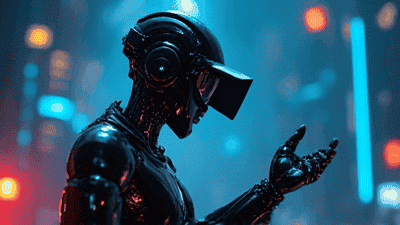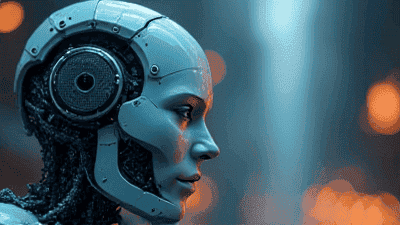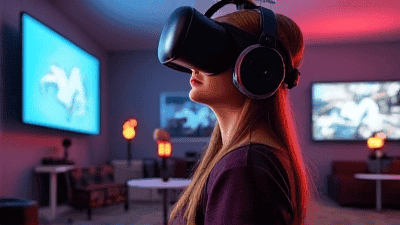
Artificial intelligence (AI) is rapidly transforming the filmmaking landscape, moving beyond theoretical concepts to practical applications across every stage of production. This technological shift is redefining creative workflows, optimizing logistical complexities, and pushing the boundaries of visual and auditory storytelling. While some perceive AI as a potential threat to traditional roles, its current trajectory points towards an augmenting force, enhancing human creativity and efficiency.
The integration of AI in cinema is not merely an incremental upgrade but a fundamental reimagining of how films are conceived, produced, and consumed. Its importance spans from automating tedious tasks to generating entirely new creative possibilities, impacting everyone from independent filmmakers to major studios, and ultimately, the audience. Current developments see AI assisting with script analysis, virtual production, and hyper-realistic visual effects, yet debates persist around creative autonomy and ethical implications. AI is undeniably key to understanding these advancements and resolving evolving industry disputes. What impact would it have on our understanding or practice of filmmaking if we failed to fully comprehend AI's profound capabilities and its ethical dimensions?
Crafting the Blueprint: AI's Pre-Production Prowess
From Script Analysis to Virtual Scouting: Enhancing Creative Foundations
Pre-production, the foundational phase of filmmaking, is witnessing significant augmentation through artificial intelligence. AI tools are now capable of deep script analysis, evaluating narratives for elements like pacing, character arcs, emotional resonance, and even commercial viability. For instance, companies like ScriptBook leverage AI to predict a film's potential box office success or audience reception by analyzing millions of past scripts and market data, offering filmmakers data-driven insights before a single frame is shot. This can help producers identify potential story weaknesses or highlight strengths, guiding rewrites or marketing strategies. Beyond analysis, generative AI can assist in concept art creation, rapidly producing mood boards, character designs, or set visualizations based on textual prompts, accelerating the ideation phase significantly. Artists can iterate on concepts much faster, refining their vision with AI as a powerful brainstorming partner. Another critical application is virtual location scouting; AI-powered platforms can analyze geographical data, satellite imagery, and photogrammetry scans to identify ideal filming locations that match specific script requirements, considering factors like light, accessibility, and environmental conditions. This saves immense time and travel costs, allowing filmmakers to explore global possibilities from a digital interface. The impact extends to scheduling and budgeting, where AI algorithms optimize complex production timelines and resource allocation, minimizing conflicts and maximizing efficiency for intricate projects.
Bringing Visions to Life: AI's On-Set Innovations

Transforming Filming: Smart Cameras, Motion Capture, and Real-time VFX
During the production phase, AI is revolutionizing how footage is captured and how visual elements are integrated into the live-action environment. Smart camera systems, for example, employ AI for automated framing, intelligent focus tracking, and dynamic shot composition, adapting in real-time to subject movement and director’s preferences. This capability allows smaller crews to achieve complex shots that previously required dedicated operators or extensive calibration. Virtual production, a cutting-edge technique, heavily relies on AI-driven real-time rendering engines. These engines project photorealistic computer-generated environments onto large LED walls, allowing actors to perform within dynamic virtual worlds that react instantly to camera movements. This significantly reduces the need for green screens and extensive post-production, as visual effects are rendered live during principal photography. AI is also enhancing motion capture, making the process more precise and less intrusive, and enabling sophisticated digital character performances. Furthermore, AI-powered de-aging technology, famously used in films like "The Irishman," employs neural networks to realistically alter actors' appearances across different timelines, a complex task that demands incredible computational power and artistic subtlety.
The adoption of AI in production streamlines workflows and offers tangible gains:
| AI Application Area | Average Time Saved (%) | Cost Reduction (%) | Accuracy Increase (%) |
|---|---|---|---|
| Virtual Production Setup | 30% | 25% | 40% |
| Smart Camera Operations | 20% | 15% | 35% |
| Motion Capture Processing | 40% | 20% | 50% |
These metrics highlight how AI is not just a creative tool but a powerful force for operational efficiency. The integration of AI allows production teams to achieve higher levels of artistic control and technical precision while optimizing resource allocation. Real-time visual effects, facilitated by AI, empower directors to make informed creative decisions on set, reducing costly reshoots and enhancing the overall quality of the final product.
Refining Reality: AI's Post-Production Power
Streamlining Editing, Sound Design, and Visual Effects with AI
Post-production, where raw footage is meticulously transformed into a polished film, is experiencing some of AI’s most profound impacts. AI-powered editing software can now generate initial cuts by automatically analyzing footage, identifying key moments, and assembling sequences based on narrative flow or director's guidelines. Tools like Adobe Premiere Pro integrate AI features for intelligent audio ducking, auto-reframe, and content-aware fill, significantly speeding up routine tasks. In sound design, AI excels at noise reduction, isolating dialogue from background clamor, and even synthesizing realistic voiceovers or ambient sounds, making audio mixing more efficient and precise. For visual effects (VFX), AI is a game-changer. It automates labor-intensive processes such as rotoscoping (isolating subjects from backgrounds) and object removal, which traditionally took hundreds of artist hours. Generative AI models can create hyper-realistic digital doubles, environmental elements, or even entire fantastical creatures from simple prompts, pushing the boundaries of what’s visually achievable. Color grading, too, benefits from AI, which can analyze and apply consistent looks across disparate shots or even suggest optimal color palettes to enhance emotional impact. These advancements allow artists to focus on creative nuances rather than repetitive technical work, elevating the overall aesthetic quality of films.
Conclusion

The journey through AI's transformative influence on filmmaking reveals a paradigm shift, not merely an evolutionary step. From the genesis of a concept in pre-production, through the intricate dance of on-set capture, to the final polish of post-production, AI is redefining what is possible. It acts as an intelligent assistant, a creative partner, and an efficiency multiplier, enhancing script analysis, enabling virtual sets, automating complex visual effects, and streamlining editing workflows. This pervasive integration firmly establishes AI as a critical component in the contemporary filmmaking toolkit, fundamentally reshaping industry practices and elevating the craft. The core finding is clear: AI is not just an ancillary technology; it is becoming the very fabric of modern cinematic creation, offering unprecedented creative control, speed, and cost-effectiveness.
Looking ahead, the future of filmmaking with AI promises even more radical innovations, including fully AI-generated narratives, hyper-personalized cinematic experiences, and interactive storytelling where audiences influence plot progression. However, these advancements bring forth challenges such as the ethical implications of deepfakes, copyright concerns for AI-generated content, and the potential displacement of certain human roles. Macro scientific policies will need to adapt to regulate AI's use, ensuring responsible development and deployment. Continuous technological iteration will refine AI's capabilities, while interdisciplinary integration with fields like psychology and neuroscience could unlock new depths in emotional storytelling. The industry must prioritize upskilling its workforce and fostering collaborative models where human creativity directs AI's immense power. Continued research into explainable AI and robust ethical frameworks will be crucial to harness its full potential responsibly and ensure that cinema remains an art form driven by human vision and emotion.
Frequently Asked Questions (FAQ)
Q: How will AI impact job roles in filmmaking, particularly for creatives? A: The prevalent fear that AI will simply replace human creatives in filmmaking often misunderstands AI's current capabilities and trajectory. Instead of outright replacement, AI is more accurately viewed as an augmentation tool. For roles like editors, VFX artists, concept artists, and even writers, AI automates repetitive, time-consuming, and data-intensive tasks. For example, an AI can generate a first cut of an edit, rotoscope characters in a VFX shot, or produce multiple concept art variations in minutes. This frees up human creatives to focus on higher-level creative decision-making, artistic direction, and nuanced storytelling. New job roles are also emerging, such as "AI prompt engineers" who specialize in guiding generative AI to produce specific creative outputs, or "AI ethics specialists" who ensure responsible AI deployment. Filmmakers will need to adapt by learning to effectively use AI tools, viewing them as powerful assistants that expand their creative bandwidth rather than replace their fundamental skills. The focus shifts from manual execution to critical thinking, problem-solving, and vision — skills that remain uniquely human.
Q: What are the ethical considerations and potential biases of using AI in filmmaking? A: The integration of AI into filmmaking introduces several significant ethical considerations and potential biases that the industry must address proactively. One major concern is the proliferation of "deepfakes," highly realistic AI-generated or manipulated media that can blur the line between reality and fiction. This raises issues of consent, authenticity, and potential misuse for malicious purposes, impacting actors' likeness rights and public trust. Another critical area is copyright and ownership: who owns the intellectual property of content generated or heavily assisted by AI? Current legal frameworks are still catching up to this evolving technological landscape. Furthermore, AI models are trained on vast datasets, and if these datasets contain inherent biases (e.g., historical underrepresentation of certain demographics in film), the AI's output can perpetuate or even amplify those biases. This could lead to a lack of diversity in character portrayal, story themes, or even visual aesthetics. There are also concerns about job displacement and the devaluing of human artistry if AI's contributions are not appropriately credited or compensated. Addressing these issues requires transparency in AI's application, robust ethical guidelines, industry-wide collaboration on best practices, and the development of "responsible AI" frameworks that prioritize fairness, accountability, and human oversight.








